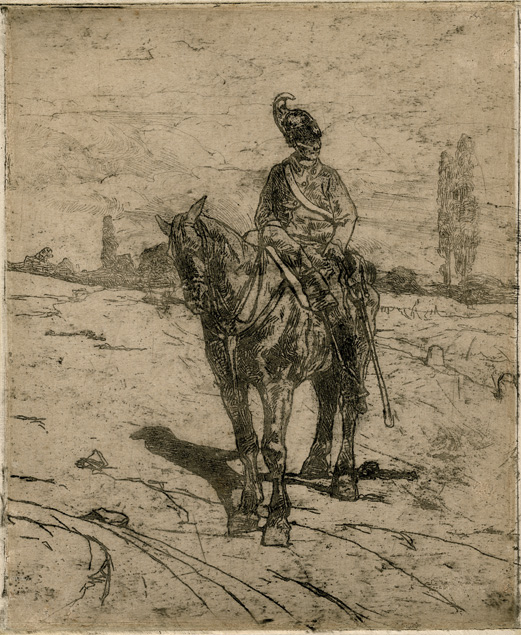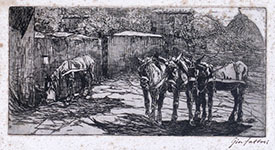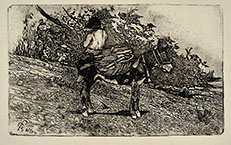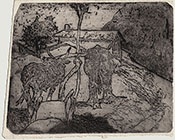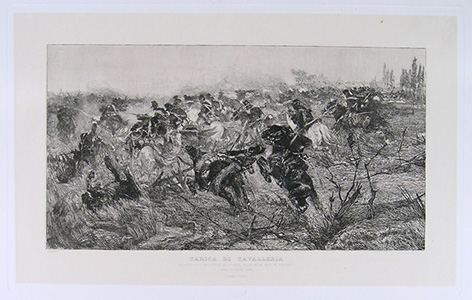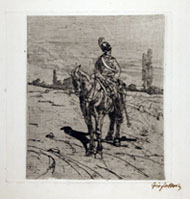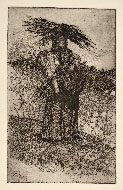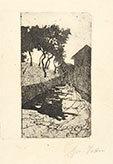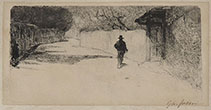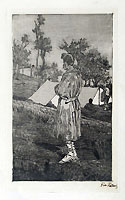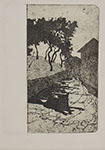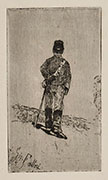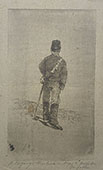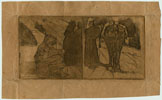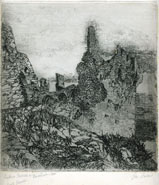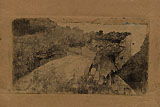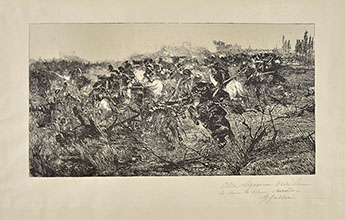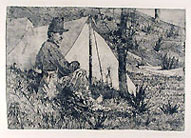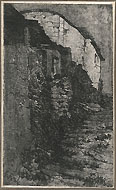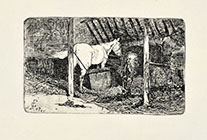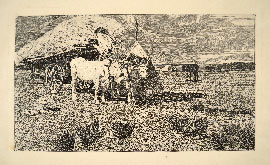(Livorno 1825 - Florence 1908)
VEDETTA (Look-out Post)
Zinc etching, Baboni-Malesci CXLIV. The print has the characteristics of the impressions pulled by Fattori himself, or under his direct guidance, with his small hand press. These impressions were printed on various types of paper, often recovered by chance, easily recognizable by the narrow margins and sometimes used to wrap the plates and recognize them. Several examples of these impressions are in the Franconi collection. See: Andrea Baboni, Le incisioni di Giovanni Fattori nella collezione Franconi, Florence, 1987; nos. 4, 26, 28, 64, 74, 78 and 85. Baboni generally dated these impressions c. 1900.
A unique artist's proof of this print exists (see here on my web site), possibly executed in the late eighties, before the reduction of the plate, before the dotting work in a few areas and before several signs of slight damages (oxidations and scratches).
The impression presented here has been printed, with black ink, on an unusual thin ivory cardboard, not so much absorbent. I have compared it with two other examples at the GDS Uffizi, and, for the evidence of the damages in the plate, our print is similar to the impression from the Rosselli collection (GAM 287). Trimmed just outside the borderline, evenly toned, a few small rubbed areas; 203 x 167 mm.
Giovanni Fattori, possibly the most important painter of the nineteenth century in Italy, received his first instruction in drawing from a lesser painter of his native town. In 1846 Fattori moved to Florence to attend the Academy. During the 1850s Fattori joined the innovative artists, called Macchiaioli, who met at the Caffè Michelangelo in Florence and were champions of a new technique and style to contrast the conventional academic language. During those years, he still produced works that could be attributed to the historical-romantic school but his interest in studying from life also extended to landscape painting and the military life of the day became the subject of his first experiments in painting using the macchia technique. In 1867, after the death of his first wife, Fattori frequently stayed in the Maremma region which became the ideal backdrop for his works. Fattori began etching in the early 1880s, when he was nearly sixty; quite soon he was able to appreciate the difference of expression he could achieve using this new medium. A real peintre-graveur, he continued with etching his artistic research on light and essential shapes in reality.
